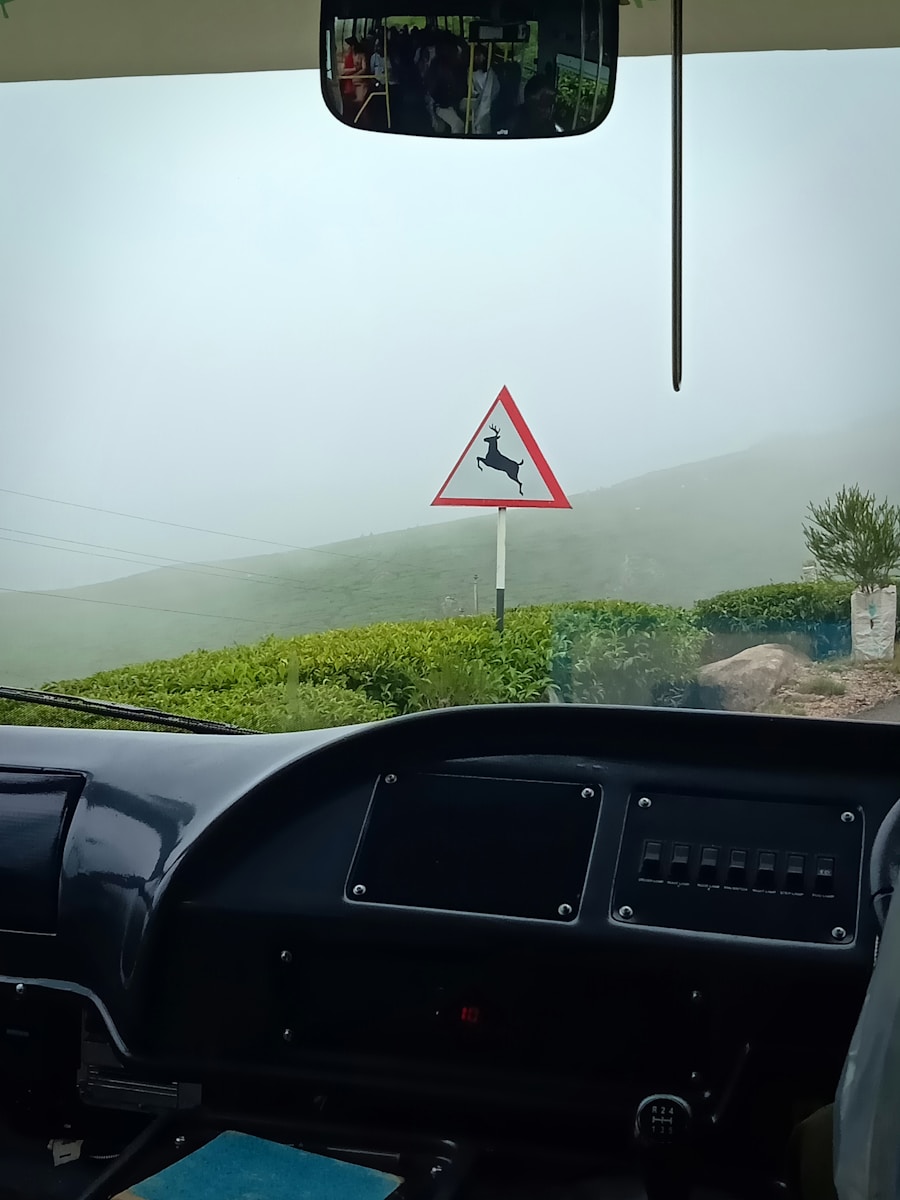Renting a car can be an exhilarating experience, offering the freedom to explore new destinations at your own pace. However, it is essential to grasp the nuances of rental agreements and the vehicle itself before hitting the road. Rental cars come in various shapes and sizes, from compact sedans to spacious SUVs, each designed to cater to different needs and preferences.
Understanding the terms of your rental agreement is crucial; this includes knowing the mileage limits, fuel policies, and insurance options available. For instance, some rental companies may offer unlimited mileage, while others impose restrictions that could lead to additional charges if exceeded. Moreover, it is vital to familiarize yourself with the rental company’s policies regarding damage and liability.
Many companies offer collision damage waivers (CDW) or loss damage waivers (LDW), which can protect you from financial responsibility in case of an accident. However, these waivers often come with exclusions and conditions that you should be aware of. Additionally, understanding the fuel policy is essential; some companies require you to return the car with a full tank, while others may allow you to return it empty but charge you a premium for refueling.
By comprehensively understanding these aspects, you can avoid unexpected costs and ensure a smoother rental experience.
Key Takeaways
- Understanding the Rental Car: Familiarize yourself with the make, model, and features of the rental car before driving.
- Familiarizing Yourself with the Vehicle: Take time to adjust the seat, mirrors, and familiarize yourself with the controls before hitting the road.
- Adhering to Local Traffic Laws and Regulations: Research and understand the local traffic laws and regulations of the area you will be driving in.
- Adjusting to Different Driving Conditions: Be prepared to adapt to different driving conditions such as weather, road quality, and traffic patterns.
- Being Mindful of the Rental Car’s Limitations: Understand the limitations of the rental car, such as its size, power, and handling, and drive accordingly.
- Taking Precautions to Prevent Theft or Break-ins: Always lock the car when unattended and avoid leaving valuables in plain sight to prevent theft or break-ins.
- Handling Emergency Situations: Familiarize yourself with the location of the emergency kit and know how to handle emergency situations such as accidents or breakdowns.
- Returning the Rental Car in Good Condition: Take care of the rental car and return it in the same condition it was rented to avoid additional charges.
Familiarizing Yourself with the Vehicle
Adjusting to Optimal Comfort and Visibility
Before driving off, take a moment to adjust the seat and mirrors for optimal visibility and comfort. This simple act can enhance your driving experience and ensure safety on the road.
Familiarizing Yourself with Dashboard Features
Additionally, familiarize yourself with the dashboard controls, including the headlights, windshield wipers, and climate control systems. Knowing how to operate these features can prevent distractions while driving.
Understanding the Vehicle’s Performance Characteristics
Another critical aspect of getting acquainted with your rental car is understanding its performance characteristics. Different vehicles handle differently; for example, a compact car may have a tighter turning radius compared to a larger SUV. If you are unfamiliar with driving larger vehicles, take a few moments to practice maneuvering in a safe area before venturing onto busy roads. Pay attention to how the car accelerates, brakes, and responds to steering inputs. This knowledge will not only boost your confidence but also enhance your ability to react appropriately in various driving situations.
Adhering to Local Traffic Laws and Regulations

When driving a rental car in a new location, it is imperative to adhere to local traffic laws and regulations. Traffic rules can vary significantly from one region to another, and ignorance of these laws can lead to fines or accidents. For instance, some countries have strict regulations regarding speed limits, which may differ from those in your home country.
In many European nations, speed limits are enforced rigorously, with hefty fines for violations. Familiarizing yourself with these limits before setting out can save you from unexpected penalties. Moreover, understanding local driving customs is equally important.
In some cultures, aggressive driving may be the norm, while in others, patience and caution are valued. For example, in countries like Italy, you may encounter drivers who weave in and out of traffic with little regard for lane discipline. Conversely, in places like Japan, there is a strong emphasis on politeness and adherence to traffic signals.
Observing how local drivers behave can provide valuable insights into navigating unfamiliar roads safely.
Adjusting to Different Driving Conditions
Driving conditions can vary dramatically based on geography and weather patterns. If you are renting a car in a region known for its mountainous terrain or coastal roads, it is essential to adjust your driving style accordingly. For instance, when navigating steep inclines or declines, be mindful of your speed and braking distance.
In such areas, using lower gears can help maintain control and prevent overheating of the brakes. Additionally, if you find yourself driving in adverse weather conditions such as rain or snow, it is crucial to adapt your driving techniques. Reducing speed and increasing following distance can significantly enhance safety during inclement weather.
Furthermore, urban environments present their own set of challenges. City driving often involves navigating through heavy traffic, dealing with pedestrians, and understanding complex intersections. Familiarize yourself with local signage that may indicate one-way streets or restricted zones.
Utilizing navigation apps can also be beneficial in urban settings; they provide real-time traffic updates and alternative routes that can help you avoid congestion. By adjusting your driving habits to suit different conditions, you can enhance both your safety and enjoyment while exploring new areas.
Being Mindful of the Rental Car’s Limitations
While rental cars are designed for convenience and comfort, they do come with certain limitations that drivers should be aware of. One significant aspect is the vehicle’s fuel efficiency; different models have varying miles per gallon (MPG) ratings that can impact your travel budget. If you’re planning a long road trip, consider choosing a vehicle that offers better fuel economy to minimize costs associated with refueling.
Additionally, be mindful of the car’s size when parking or maneuvering in tight spaces; larger vehicles may require more room than smaller ones. Another limitation to consider is the rental car’s insurance coverage. While many rental companies offer insurance options at an additional cost, it is essential to understand what is covered under your personal auto insurance policy or credit card benefits before purchasing extra coverage.
Some credit cards provide rental car insurance as part of their benefits package; however, this coverage may come with specific conditions that must be met for it to be valid. Being aware of these limitations can help you make informed decisions regarding insurance and avoid unnecessary expenses.
Taking Precautions to Prevent Theft or Break-ins

When renting a car, it is crucial to take precautions against theft or break-ins. Rental cars can be attractive targets for thieves due to their temporary nature and the assumption that they may contain valuable items left behind by previous renters. Always remember to lock the doors when leaving the vehicle unattended and avoid leaving any personal belongings visible inside the car.
Items such as bags, electronics, or even clothing can entice thieves if left in plain sight. Additionally, consider parking in well-lit areas or secure parking lots whenever possible. Many rental companies provide guidance on safe parking locations in unfamiliar cities; taking advantage of this information can significantly reduce the risk of theft.
If you find yourself in a situation where you must leave valuables in the car temporarily, consider using a trunk or storage compartment that is less visible from outside the vehicle. By being proactive about security measures, you can enjoy peace of mind while exploring new destinations.
Handling Emergency Situations
Despite careful planning and preparation, emergencies can arise while driving a rental car. Whether it’s a flat tire, engine trouble, or an accident, knowing how to handle these situations is essential for ensuring safety and minimizing stress. In the event of a breakdown or mechanical failure, pull over to a safe location away from traffic if possible.
Turn on your hazard lights to alert other drivers of your situation and contact roadside assistance provided by the rental company. If you find yourself involved in an accident, remain calm and assess the situation before taking action.
Documenting the scene is also crucial; take photos of the vehicles involved and gather contact information from witnesses if available. Most rental agreements require you to report accidents promptly to the rental company as well as local authorities if necessary. By being prepared for emergencies and knowing how to respond effectively, you can navigate challenging situations with greater confidence.
Returning the Rental Car in Good Condition
Returning your rental car in good condition is not only courteous but also essential for avoiding additional charges upon return. Before heading back to the rental location, take time to clean out any personal belongings and ensure that the vehicle is free from excessive dirt or debris. While most rental companies do not require you to wash the car before returning it, leaving it excessively dirty could result in cleaning fees.
Additionally, inspect the vehicle for any damage that may have occurred during your rental period. If you notice any scratches or dents that were not present at pickup, document them with photos and inform the rental company upon return. This proactive approach can help prevent disputes regarding damage claims later on.
Finally, ensure that you return the vehicle with the appropriate fuel level as specified in your rental agreement; failing to do so could incur refueling charges that are often higher than local gas prices. By following these guidelines throughout your rental experience—from understanding the vehicle’s features to returning it in good condition—you can enhance your overall experience while minimizing potential issues along the way.
This luxurious train journey offers breathtaking views of the Canadian Rockies and is sure to be a highlight of your vacation. For more tips on making the most of your travel adventures, check out The Ultimate Cheat Sheet on Travel. This article provides valuable insights and advice for travelers of all experience levels.
FAQs
What are some top tips for driving safely in a rental car?
Some top tips for driving safely in a rental car include familiarizing yourself with the vehicle, understanding the local traffic laws and road signs, avoiding distractions while driving, and being mindful of your surroundings.
Why is it important to familiarize yourself with the rental car before driving?
Familiarizing yourself with the rental car before driving is important to ensure that you understand the vehicle’s features, controls, and handling characteristics, which can help you drive safely and confidently.
How can travelers understand the local traffic laws and road signs when driving a rental car in a new location?
Travelers can understand the local traffic laws and road signs by researching the driving regulations of the destination, paying attention to road signs and signals while driving, and using GPS or maps to navigate unfamiliar roads.
What are some common distractions to avoid while driving a rental car?
Common distractions to avoid while driving a rental car include using mobile phones, adjusting the radio or GPS, eating or drinking, and engaging in conversations that take your focus away from the road.
Why is it important to be mindful of your surroundings when driving a rental car?
Being mindful of your surroundings when driving a rental car is important to anticipate potential hazards, react to unexpected situations, and ensure the safety of yourself and others on the road.



0 Comment